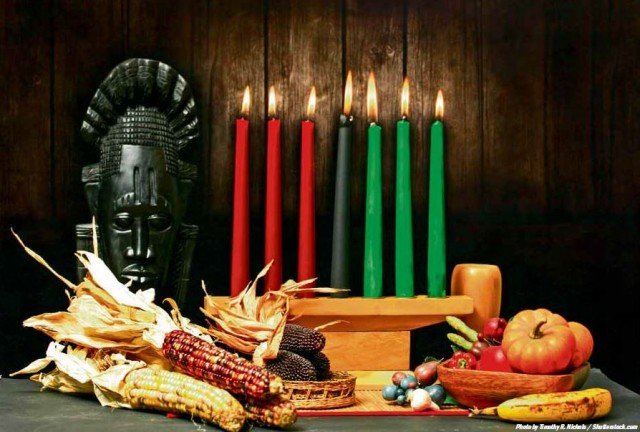By Diamond Brown
Blacks in Government Program
Kwanzaa is an African American and Pan-African holiday celebrated by millions throughout the world, from December 26 to the 1st of January. The name Kwanzaa is derived from the phrase “matunda ya kwanza” which means “first fruits” in the Swahili language. The first-fruits celebrations are recorded in African history as far back as ancient Egypt and Nubia. Kwanzaa builds on the five fundamental activities of Continental African “first fruit” celebrations: in gathering of people to share bonds; reverence of the creator; commemoration for the past and honor of our ancestors; re-commitment to the highest cultural ideas; and celebration for the good of life.
The heart and soul of Kwanzaa in America is to build a sense of family, community, and culture within the African American community. The founder, Dr. Maulana Karenga, established the celebration during The Civil Rights and Black Freedom Movements. His purpose was to encourage cultural awareness and a historic and personal identity among African Americans.
The Kwanzaa celebration which is a cultural and not religious holiday, exemplifies all that is unique and valuable to Africans and African Americans. With the celebration of Kwanzaa, Dr. Karenga introduced to the African American community seven distinct values of African culture: Umoja (Unity), Kujichagulia (Self-Determination), Ujima (Collective Work and Responsibility), Ujamaa (Cooperative Economics), Nia (Purpose), Kuumba (Creativity), and Imani (Faith).
The actual Kwanzaa celebration takes much time and preparation to gather all the required African and African inspired materials. You must show respect to its traditions and follow the steps for preparation with dignity. The colors of Kwanzaa are BLACK for the people, RED for the struggle, and GREEN for the future. To prepare, you will need a mat (mkeka), candle holder (Kinara), and seven candles (saba): one black candle, three red candles, and three green candles.
In a central place in your home, preferably your dining room table, you would spread an African Cloth. Next the mat would be placed in the center of the cloth to symbolize rootedness in tradition. The candle holder would be placed on the mat and each candle would be placed in its distinct order. The black candle is placed in the middle; the red candles are placed to the left of the black candle and the green to its right. The first day of Kwanzaa the black candle is lite to demonstrate Unity. The following six days the candles are lite from left to right. The red candles demonstrating: Self-Determination, Cooperative Economics, and Creativity. The green candles are last to demonstrate: Collective Work and Responsibility, Purpose, and Faith. This procedure is used to indicate that the people come first, then the struggle, and then the hope that comes from the struggle.
You can add to this by creating your own family tradition. By adding African art objects, books, and other cultural items of African history you can make Kwanzaa a holiday your family enjoys and looks forward to celebrating.
Kwanzaa is a set-aside time for African Americans to embrace their historic culture and remember the past. Too many neglect this responsibility. Make an effort this year to celebrate Kwanzaa.

